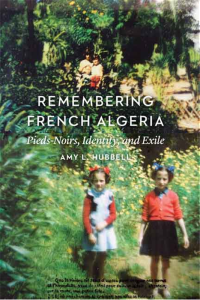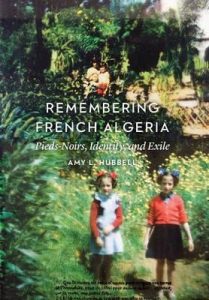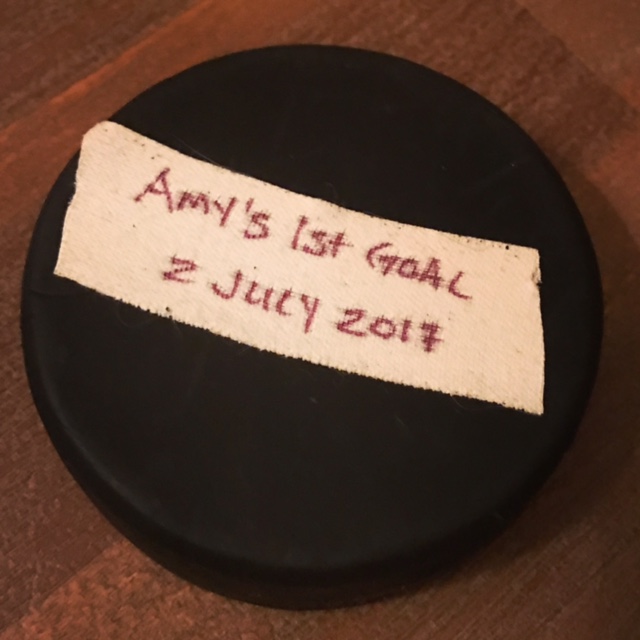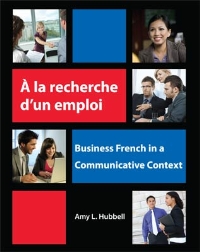A review of my much smarter French professoring partner’s latest book, Remembering French Algeria: Pieds-Noirs, Identity, and Exile begins with, “Amy Hubbell’s recent book is perhaps the most important work of literary criticism to date devoted to examining the veritable richness and inherent paradoxes of Pied-Noir literature in all of its extremely divergent forms. Hubbell seamlessly blends close textual readings of primary sources with the  interdisciplinary theories of renowned researchers such as Cathy Caruth, Benjamin Stora, Jacques Mauger, Judith Butler, Sigmund Freud, Jacques Derrida, and Hélène Cixous whose ideas continue to shape the emerging field of trauma studies. The author adopts a very accessible yet rigorous, systematic approach to exploring the vast and ever-evolving body of literature written by the incredibly diverse group of exiled people commonly referred to as the “Pieds-Noirs.”
interdisciplinary theories of renowned researchers such as Cathy Caruth, Benjamin Stora, Jacques Mauger, Judith Butler, Sigmund Freud, Jacques Derrida, and Hélène Cixous whose ideas continue to shape the emerging field of trauma studies. The author adopts a very accessible yet rigorous, systematic approach to exploring the vast and ever-evolving body of literature written by the incredibly diverse group of exiled people commonly referred to as the “Pieds-Noirs.”
Our sibling cats are named Jacques (the white one) and Cixous (the black one).
So while basking in the moment and the years of effort that went into the book, I’ll pass on these words from Nathan C. Hall, an associate professor in the Learning Sciences program and director of the Achievement Motivation and Emotion research group at McGill University (Canada, represent) who wrote in the Chronicle of Higher Education last year that:
“I am not an intellectual, leading expert, or public scholar. I am a rank-and-file academic with the job of balancing respectable research with acceptable teaching evaluations and sitting on enough committees to not be asked to sit on more committees (that’s the bit for Amy). And in my spare time, I run what is arguably one of the most influential academic accounts on social media: Shit Academics Say.
Since starting the account in September of 2013, it has grown to over 122,000 followers, gaining 250 to 300 new followers daily and ranking in the top 0.1 percent across social media influence metrics such as Klout, Kred, and Followerwonk. To unpack this a bit, tweets sent from my phone while recalibrating dopamine levels on the treadmill, or waiting outside my 3-year-old’s ballet class, are showing up in about 10 million Twitter streams and generating 200,000 to 300,000 profile visits a month, effectively making @AcademicsSay a bigger “social authority” on Twitter than nearly all colleges and academic publications. Not weird at all.
 Although this might sound impressive, the popularity of the account is perhaps not surprising. First, academics use Twitter mainly for distraction, with tweets providing humorous details of academic content typically gaining the most exposure. Second, it is immediately apparent to new Twitter users that parody accounts like @kimkierkegaardashian, @NoToFeminism, or @SwiftOnSecurity tend to be more popular than traditional outlets — an observation that sparked an idea for how to personally connect with other academics in a not-boring way and on a scale large enough to have my procrastination count as research.
Although this might sound impressive, the popularity of the account is perhaps not surprising. First, academics use Twitter mainly for distraction, with tweets providing humorous details of academic content typically gaining the most exposure. Second, it is immediately apparent to new Twitter users that parody accounts like @kimkierkegaardashian, @NoToFeminism, or @SwiftOnSecurity tend to be more popular than traditional outlets — an observation that sparked an idea for how to personally connect with other academics in a not-boring way and on a scale large enough to have my procrastination count as research.
Like many academics, I have never been completely comfortable with the peculiarities, predilections, or pretentions of our profession, and have over time found myself both ashamed and amused while telling students to “please have a seat while I sit three feet away and finish this non-urgent email for the next five minutes”, or telling myself “I should be writing” when doing anything remotely enjoyable. And since starting this profession six years ago, I have also been regularly confused and frustrated by the cognitive dissonance I regularly encountered as part of trying to stay productive, employable, and, most important, fundable.
As a grad student, I had often heard that a retirement boom was coming, that course evaluations should not be believed until the third time around, and that all resubmitted manuscripts and grant applications are eventually accepted. However, I personally found these sentiments to be less than comforting after my own failed job applications (90-plus over two years), unsuccessful grant applications (15 since 2000), soul-crushing course evaluations (“He should have applied some of the motivational principles he teaches about to his own teaching.” — Winter 2015, paraphrased), and unjustified manuscript rejections (“I am a jealous and generally unhappy person.” — Reviewer 2, paraphrased).
And very much unlike a detached analysis of affect in which I was well-trained, I increasingly found myself dealing with unexpected combinations of emotion such as boredom/anger while grading, guilt/envy while reviewing a manuscript I should have written, or relief/shame after an internal grant deadline was extended. As an experienced overthinker, I was also able to convince myself that these wonderfully nuanced internal experiences were somehow unique to my beautiful mind. Whether it was self-disappointment over writing guilt on date night, resentment while teaching night classes instead of reading bedtime stories to my kids, or using humor to avoid feeling like a fraud while teaching content learned the day before or writing papers few would ever read, well-worn constructs like work-life balance and impostor syndrome didn’t seem to fit.
 But I shouldn’t complain. I get paid to think about thinking about thinking, and start my first sabbatical this summer to ostensibly gain a “fresh perspective on an old problem” (aka: binge-watching Entourage.
But I shouldn’t complain. I get paid to think about thinking about thinking, and start my first sabbatical this summer to ostensibly gain a “fresh perspective on an old problem” (aka: binge-watching Entourage.
The rest of the story is great, but as she finishes her sabbatical, here are some other reviews she can take to performance evaluations:
“Hubbell’s Remembering French Algeria is an intriguing and important contribution to scholarship on the representation of Algeria in literature and film.”—D. L. Boudreau, Choice
“Perhaps the most important work of literary criticism to date devoted to examining the veritable richness and inherent paradoxes of Pied-Noir literature in all of its extremely divergent forms.”—Keith Moser, Contemporary French Civilization
“This is a thoughtful and thought-provoking study that contains remarkable insights. Remembering French Algeria makes an important contribution to current scholarship on postcolonial relations between France and Algeria and fills an important gap in that scholarship by focusing specifically on the oft-overlooked category of the community of Pieds-Noirs.”—Alison Rice, author of Time Signatures: Contextualizing Contemporary Francophone Autobiographical Writing from the Maghreb
We both have a hockey (ice) game to play in three hours.
 Happy birthday to my beautiful and brainy wife who has guided me through the last few years as my brain goes away, is manager of Sorenne’s hockey team, and has taken on a lot that she didn’t sign up for.
Happy birthday to my beautiful and brainy wife who has guided me through the last few years as my brain goes away, is manager of Sorenne’s hockey team, and has taken on a lot that she didn’t sign up for.











 French Business Textbook!”
French Business Textbook!” in-depth introduction to the major aspects of using French in a professional context. Of particular interest is the incorporation of la Francophonie and the European Union, two critical topics rarely presented in other business French textbooks. Anyone intending to seek employment in a French-speaking country or region will benefit greatly from the content and guidance that this text provides."
in-depth introduction to the major aspects of using French in a professional context. Of particular interest is the incorporation of la Francophonie and the European Union, two critical topics rarely presented in other business French textbooks. Anyone intending to seek employment in a French-speaking country or region will benefit greatly from the content and guidance that this text provides.".jpg) “Hygiene, before Microbiology, is only hygienic in its intentions. It’s a Science of appearances that rests in the hands of the blind: what’s healthy is beautiful, good, and doesn’t smell bad.”
“Hygiene, before Microbiology, is only hygienic in its intentions. It’s a Science of appearances that rests in the hands of the blind: what’s healthy is beautiful, good, and doesn’t smell bad.”